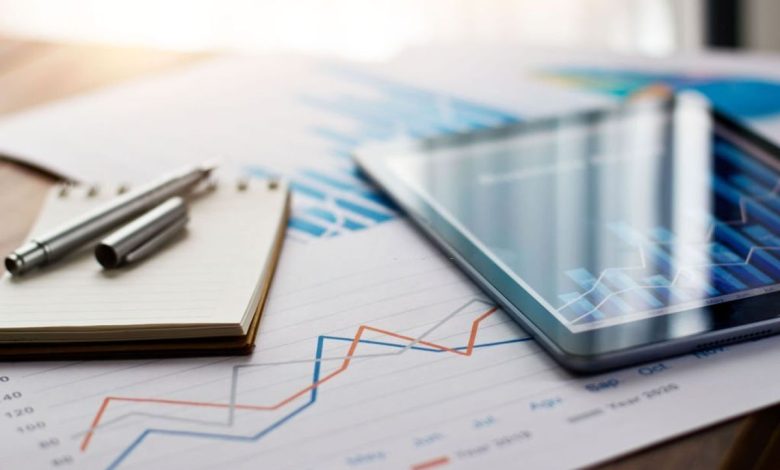Data Analytics Careers? Things you should know!

Firstly, have a look at what data analytics is? The definition of data analytics covers the vast field, reach as analyzing raw data to uncover trends and answer questions. It does, however, comprise a variety of strategies with a variety of objectives. The science of studying raw data to conclude it is known as data analytics.
Retail data analytics is a vast phrase that refers to a wide range of data analysis techniques. The application of data analytics to any data type to obtain information that improves things. Data analytics approaches can uncover trends and metrics that would otherwise lose in a flood of data. By improving operations, this data may use to increase a company or system’s overall efficiency.
Pursue your career in data analytics in 2022
It is no exaggeration to argue that modern civilization is data-driven. With this growth comes a big chance to improve your data analytics abilities, such as by participating in a data analytics boot camp tailored toward newcomers to the profession. Digital transformation has become a watchword in modern business, and skilled data analysts are in higher demand than ever. There are employment openings in almost every field, including telecommunications, manufacturing, retail, finance, healthcare, and even fitness.
To succeed in their area, data analysts need a set of particular talents, which are technical; nevertheless, they also require a set of soft skills. There is no one-size-fits-all approach to acquiring these abilities. Below we have listed the top technical and soft to become a data analyst:
1. Data Visualization
The ability to explain data results using graphics or other images is known as data visualization. The purpose of this is simple it facilitates a better understanding of data-driven insights, even for those who are not trained in data analysis. With data visualization, data analysts can help a decision-maker of business identify patterns and understand complex ideas at a glance.
2. Data Cleaning
Cleaning is an essential aspect of every project’s success, and data cleaning is no exception! It’s one of the most essential processes in putting together a working machine learning model, and it takes up a portion of any data analyst’s day. Even basic algorithms can produce astonishing insights when used with a properly cleaned dataset. On the other side, incomplete data might create false patterns and lead to inaccurate conclusions. Data analyst qualifications, by necessity, necessitate good data cleansing abilities – there are no two ways about it.
3. Python
Although should be the top priority for would-be analysts. Python is a prominent multi-purpose programming language that is popular for its flexibility and a large library of libraries, which are useful for analytics and sophisticated computations.
4. Machine Learning
While machine learning is not a skill in the way data cleaning or learning a programming language might be, understanding it can help you become competitive in the data analytics hiring field. According to research, artificial intelligence and predictive analytics are trendy investment issues. While not all analysts will be working on machine learning projects, having a basic grasp of the tools and ideas might help you stand out from the crowd during your job search.
5. Communication
You must communicate your results to others at the end of the day. It doesn’t matter if you’re the world’s most gifted and perceptive data analyst; if you can’t convey the patterns you notice to others without technical knowledge, you’ve failed. Being a good data analyst effectively means becoming bilingual. You should be able to discuss highly technical issues with your trained colleagues and offer clear, high-level explanations in a way that helps — rather than confuses — business-focused decision-makers. If you can’t, you may still need to improve your data analyst skills.
6. Critical Thinking
It’s not enough to look at data; you also need to comprehend it and consider its ramifications beyond the statistics. You may think analytically about data as a critical thinker, discovering patterns and deriving actionable insights and information from the data you have. It necessitates going above and above and applying yourself to thinking rather than just digesting
Types of Data Analytics
The field of data analytics is vast mainly classified into four categories: descriptive, diagnostic, predictive, and prescriptive. Each type has a distinct purpose and function in the data analysis process. There are also essential data analytics apps in the corporate world.
1. Descriptive Analytics
It helps answer questions about what happened. These techniques summarize large datasets to describe outcomes to stakeholders.
2. Diagnostic Analytics
It helps answer questions about why things happened. These techniques supplement more basic descriptive analytics. They take the findings from descriptive analytics and dig deeper to find the cause.
3. Predictive Analytics
Predictive analytics helps answer questions about what will happen in the future. These techniques use historical data to identify trends and determine if they are likely to recur. Predictive analytics tools provide valuable insight into what may happen in the future.
4. Prescriptive Analytics
Prescriptive analytics assists in determining what actions should be done. Data-driven decisions may utilize predictive analytics insights. In the face of uncertainty, this enables firms to make sensible judgments. Machine learning tactics are used in predictive analytics approaches to detect trends in massive datasets.
Using Data Analytics to Thrive
Unless you’ve been living in a cave for the past several decades, you’re well aware of how important data analytics has become to practically every organization and consumer on the globe. Here are four industries using advanced data analytics to thrive in a data-driven world and the beneficial skills you will need to be a part of it.
1. Retail industry
Putting the items in the hands of the right customers has long been a top priority for retailers. Retail data analytics used to optimize pricing. According to a study, companies that prioritize and personalize the customer experience are more likely to exceed their top business goals.
2. Agriculture industry
Developing efficient agriculture methods is vital to every country, and data analytics are now changing the way farmers grow and provide food. By using data science and machine learning techniques, they can quantify the predicted value of added resources as well as the probability of success.
3. Banking industry
The banking industry is also impacted by predictive analytics. Banks are learning to use internal and external customer data to create a predictive profile of each banking client, much like retail. Financial institutions can use the information they gather to provide consumers with value-added services tailored to their requirements.
4. Government or Public Sector
Public sector organizations across the globe are using data analytics, natural language processing, machine learning, speech, and image recognition to solve problems before they erupt into crises.





